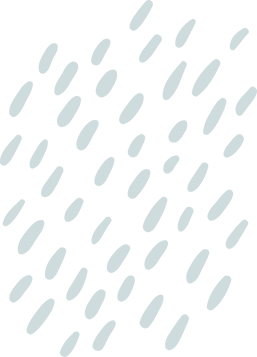Picture this: you’ve just unboxed your shiny new iPhone, ready to dive into a world of apps, memes, and endless scrolling. But wait—what’s this? Your apps are taking longer to download than a snail on a leisurely stroll. Frustrating, right?
Table of Contents
ToggleCommon Reasons For Slow App Downloads
Several factors can lead to slow app downloads on a new iPhone, affecting a user’s initial experience. Understanding these common issues can help users troubleshoot more effectively.
Network Connection Issues
Poor network connectivity often causes slow downloads. When Wi-Fi signals are weak or intermittent, download speeds can significantly decrease. Users might notice delays if they rely on cellular data with poor reception. Switching to a stronger Wi-Fi network typically resolves this issue. Ensuring that the iPhone is not in Airplane mode can also help improve connectivity. Notably, background apps using the internet may compete for bandwidth, slowing the overall download process.
Server Problems
Server-side issues can impede app download speeds. If the app’s server experiences high traffic or technical difficulties, downloads lag. Popular apps with many users may face slowdowns during peak hours. Users should check official social media accounts or websites for known outages. Real-time statuses from the App Store may also provide insights into ongoing problems. When server issues arise, patience is often necessary, as these factors are beyond a user’s control.
Device Settings Affecting Download Speed
Device settings can significantly influence app download speeds on a new iPhone. Optimizing these settings can enhance performance.
Background App Refresh
Background App Refresh allows apps to update content in the background. This feature consumes bandwidth, potentially slowing down downloads. Users can disable Background App Refresh entirely or limit it to Wi-Fi only, improving download speeds when on cellular networks. To adjust this setting, navigate to Settings, then tap on General and select Background App Refresh. A quick toggle can make a noticeable difference in overall performance.
Data Saver Mode
Data Saver Mode restricts background data usage for apps. Enabling this feature may inadvertently affect download speeds for apps. Users may notice that while this mode conserves data, it may also throttle download rates. To check the status of Data Saver Mode, go to Settings, tap on Cellular, and select Cellular Data Options. Users can toggle off this setting to potentially enhance download speeds, enjoying a smoother app installation experience.
Storage Space Considerations
Limited storage on a new iPhone can slow app downloads. Adequate space is crucial for smooth installations and updates.
Available Storage
Available storage impacts download speed significantly. If the iPhone is near capacity, it struggles to allocate space for new apps, causing delays. Users can check storage from Settings by navigating to General and selecting iPhone Storage. If apps take up too much space, deleting unused apps or large media files often helps. Clearing out old messages and offloading photos can create more room quickly.
Storage Management Settings
Storage management settings can also optimize download speed. iCloud can store photos and documents, freeing up local storage. If iCloud is used effectively, it reduces clutter on the device. Additionally, users can enable Offload Unused Apps to automatically remove non-essential apps while keeping their data intact. Adjusting these settings significantly improves app download efficiency on a new iPhone.
iOS Updates and Compatibility
Keeping iOS updated plays a crucial role in optimizing app performance on a new iPhone. Regular updates often contain important fixes and improvements that enhance overall system efficiency. New iOS versions also address bugs that may hinder download speeds. Users who miss updates might experience delays due to outdated software.
Importance of Keeping iOS Updated
Maintaining the most current iOS version ensures compatibility with the latest apps. Developers design applications to work best with the newest features and security enhancements. Using an outdated version could lead to increased download times or failed installations. Apple routinely releases updates that improve system stability and performance. Users should frequently check for updates via Settings to take advantage of these benefits.
App Compatibility with the Latest iOS
App compatibility significantly impacts download speeds on a new iPhone. Not all apps receive immediate updates after an iOS release, leading to potential lag in performance. Developers may need time to optimize their apps for new operating systems. Older versions of apps can struggle on newer iOS, resulting in slower downloads. Regularly updating apps can help maintain app functionality, ensuring faster and smoother installation processes.
Troubleshooting Tips
Experiencing slow app downloads on a new iPhone can be frustrating. These troubleshooting tips offer solutions to improve download speeds.
Restarting Your iPhone
Restarting the iPhone clears temporary files and can resolve minor software glitches. It helps refresh the device’s system and may enhance performance. Press and hold the side button along with the volume down button until the power off slider appears. Slide the power off slider, then wait for the device to completely turn off. After a brief period, press and hold the side button again until the Apple logo appears. This simple action can restore normal functioning and improve app download speeds.
Resetting Network Settings
Resetting network settings can resolve connectivity issues that affect downloads. This process removes saved Wi-Fi passwords and network preferences, so users must reconnect to their networks. Go to Settings, then tap General, and select Transfer or Reset iPhone. Tap Reset and choose Reset Network Settings. Confirm the selection, and the device will reboot with default network configurations. After resetting, reconnect to Wi-Fi or cellular networks to see if download speeds improve significantly.
Experiencing slow app downloads on a new iPhone can be frustrating but understanding the underlying causes can help users resolve the issue. By optimizing network connections and adjusting device settings, users can significantly improve download speeds. Ensuring adequate storage and keeping iOS updated also plays a crucial role in enhancing performance. With these strategies in mind, users can enjoy a smoother experience as they explore their new device. Taking proactive steps can transform initial frustrations into seamless app installations, allowing users to fully enjoy their iPhone without unnecessary delays.




